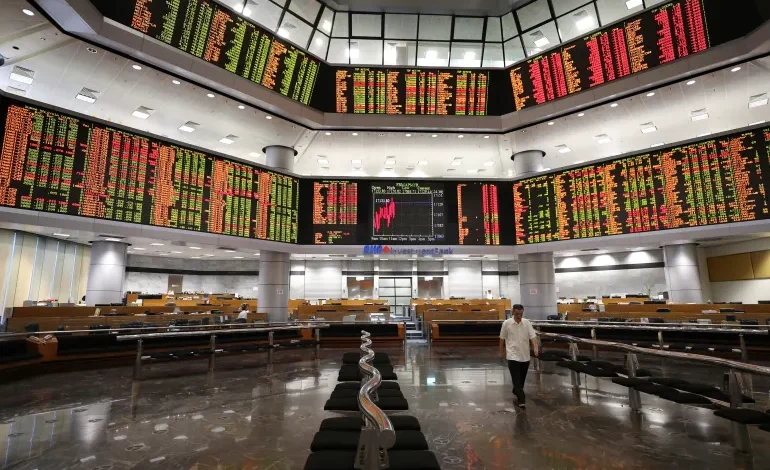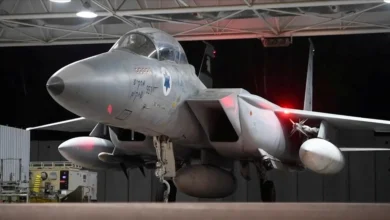Malaysia’s stock market, once dubbed ‘world’s worst’, is making a comeback

Malaysia’s stock market is experiencing a steady revival as billions of dollars pour into an exchange once written off as one of the region’s worst performers.
Buoyed by Malaysia’s robust post-pandemic economic growth and a surge in foreign investment by US tech giants, the Bursa Malaysia’s benchmark index has climbed as much as 17 percent over the past year.
Investors opened 289,000 new trading accounts during the first seven months of 2024, according to the Bursa operator, nearly double as many as those opened during the whole of 2023.
“The market appears to be emerging from a ‘lost decade,’ where it was previously undervalued with little upward movement,” Stephen Yong, a licensed financial planner with Wealth Vantage Advisory, told Al Jazeera.
Yong, a longtime investor in the local stock market, said there was “significant room” for growth and that many companies had been undervalued for a decade.
Over the past decade, political turmoil and lack of economic competitiveness were seen as a drag on Malaysia’s stock market.
During the 2010s, the Bursa’s Kuala Lumpur Composite Index (KLCI), consisting of the top 30 companies by market cap, hovered between 1,500 and 1,900 points.
In 2018, the market entered a years-long spiral of decline, as a rapid turnover of prime ministers, the fallout of the 1MDB financial scandal, and the COVID-19 pandemic battered investor confidence.
A Bloomberg article in 2019 dubbed the Bursa the “world’s worst major stock market” after it suffered a 14 percent slump over a year.
Feted as an emerging tiger economy during the 1990s, Malaysia began to lose steam after the 1997-98 Asian Financial Crisis, losing pace to neighbours such as Singapore, Tan said.
“The stock market is a reflection of the economy. And post-2005, our economy was not primed towards growth. It was just chugging along,” Tan said.
In a stinging commentary in December, Tong Kooi Ong, the owner of business newspaper The Edge, noted that the KLCI had produced an annual return of about 1 percent over the past 10 years, less than the typical return of a fixed deposit.
But market sentiment began to shift this year as the economy showed robust signs of growth and US tech giants, including Nvidia, Google and Microsoft, announced billions of dollars in investments in Malaysia to expand their cloud and AI capabilities.
In a report released by intelligence company DC Byte in July, Malaysia’s southern state of Johor, which borders Singapore, was named the fastest-growing market for data centres in Southeast Asia with more than 1.6 gigawatts of total supply.
Malaysia recorded 83.7 billion ringgit ($19.3bn) in approved investments for the first quarter of the year, up 13 percent from the previous year, more than half of which came from foreign sources.
In August, Malaysia’s central bank announced that gross domestic product (GDP) grew 5.9 percent in the second quarter of 2024, the biggest expansion in Southeast Asia apart from Vietnam and the Philippines.
In the week ending August 30, foreign investors bought a net total of 1.50 billion ringgit ($34m) in Malaysian stocks, the biggest net buying spree since March 2016, according to MIDF Research.
IPOs on the rise
Initial public offerings have also been on the rise.
The exchange registered 34 IPOs in the first nine months of this year, compared with 31 during the whole of 2023.
Those included the market debut of 99 Speed Mart, which raised 2.36 billion ringgit ($542.8m) in the biggest listing in the country in seven years.
Valued at nearly 2 trillion ringgit ($430bn), Malaysia’s Bursa is still dwarfed by regional peers such as Tokyo, Seoul, Mumbai, Singapore, Tokyo, Hong Kong and Shanghai.
But its performance over the past year has held its own among much bigger rivals.
Financial audit firm Deloitte noted in a July report that Malaysia’s IPO market had led Southeast Asia during the first half of the year with about $450m raised.
The Bursa hit 2 trillion ringgit ($460m) in market capitalisation for the first time in May, when the KLCI breached the 1,600 mark for the first time in two years, and has remained near that level since.










